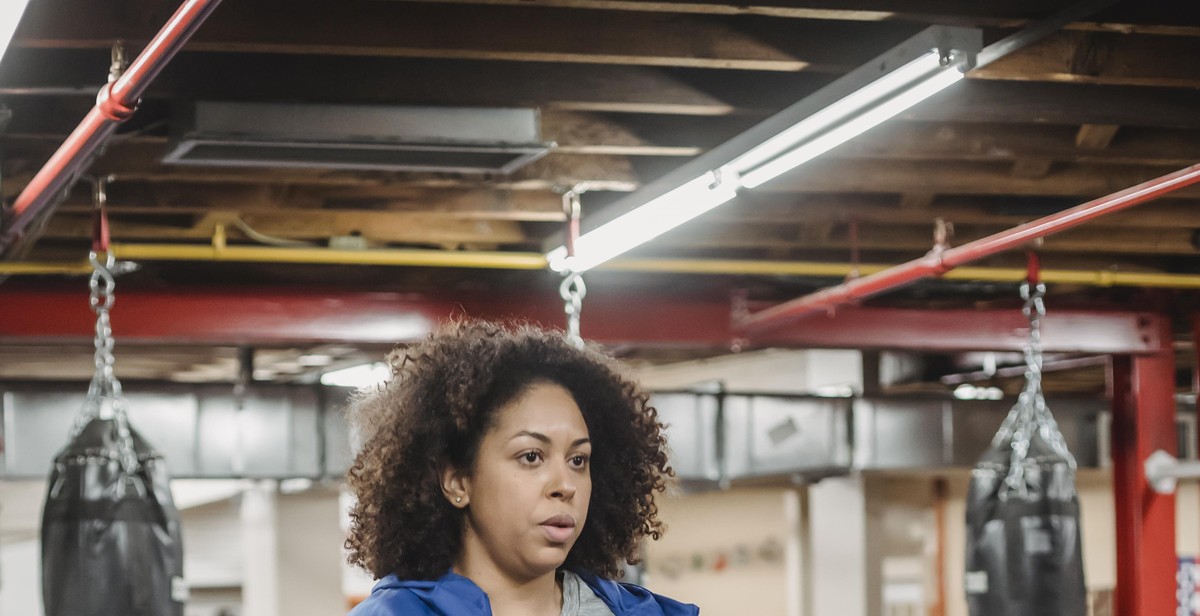How to Start a Running Club in Your Community
Running is a great way to stay healthy and active, and it’s even better when you have a group of like-minded individuals to share the experience with. That’s where starting a running club in your community comes in! Not only does it provide a fun and social way to exercise, but it also promotes a healthy lifestyle and strengthens community bonds.
Why Starting a Running Club is Important?
Running clubs offer numerous benefits to both individuals and communities. For starters, they provide a sense of accountability and motivation to maintain a regular exercise routine. Members can encourage each other to push past their limits and achieve their fitness goals.
Running clubs also offer a supportive and inclusive environment for people of all ages and fitness levels. They provide an opportunity to meet new people, make friends, and build a sense of community. Additionally, running clubs can promote local businesses and tourism, as they often organize races and events that attract participants from outside the community.
Overall, starting a running club is a great way to promote a healthy, active lifestyle while building community connections. In the following sections, we’ll explore the steps you can take to create a successful running club in your community.

Step 1: Define the Purpose and Goals
Starting a running club in your community can be an exciting and rewarding experience. However, before you dive into the logistics of organizing your club, it’s important to define the purpose and goals of your club.
What is the purpose of your running club?
The purpose of your running club should be the driving force behind your club’s existence. Are you looking to create a community of like-minded individuals who share a passion for running? Or are you looking to provide a space for runners of all levels to come together and train for races?
Whatever your purpose may be, it’s important to have a clear and concise mission statement that reflects your club’s values and goals.
What are the goals of your running club?
Once you have defined the purpose of your running club, it’s time to establish your goals. Are you looking to participate in local races as a team? Or are you looking to provide resources and support for runners looking to improve their performance?
Having clear and measurable goals will help guide your club’s activities and ensure that you are meeting the needs of your members.
- Define the purpose of your running club
- Create a clear and concise mission statement
- Establish measurable goals for your club
By taking the time to define the purpose and goals of your running club, you will set a strong foundation for your club’s success and ensure that you are providing value to your members.

Step 2: Recruit Members
After you have established your running club’s goals and objectives, the next step is to recruit members. Here are some effective ways to do so:
1. Reach out to potential members
There are several ways to reach out to potential members:
- Post flyers in local gyms, fitness centers, and running stores.
- Spread the word on social media platforms like Facebook, Twitter, and Instagram.
- Partner with local businesses and organizations to promote your club.
- Attend local running events and races to network with other runners.
2. Host a kickoff event
An effective way to attract potential members is to host a kickoff event. This can be a fun run, a meet and greet, or a social event. Make sure to promote the event through various channels to reach as many people as possible.
3. Create a membership form
Creating a membership form is essential for recruiting and managing members. The form should include basic information like name, email, and phone number. You can also include questions about the member’s running experience and goals. Make sure to keep the form simple and easy to fill out.
| Membership Form Example | |
|---|---|
| Name: | |
| Email: | |
| Phone Number: | |
| Running Experience: | |
| Running Goals: |
By following these steps, you can effectively recruit members and build a strong running community in your area.

Step 3: Plan Your Runs
Once you have established the structure of your running club, it is time to plan your runs. Effective planning will ensure that your members stay engaged and motivated. Here are some factors to consider:
How often will you run?
Determine the frequency of your runs. Will you run once a week, twice a week, or more? Consider the schedules of your members and choose a frequency that is convenient for everyone.
Where will you run?
Choose a suitable location for your runs. Will you run on trails, sidewalks, or tracks? Consider the safety of your members and choose a location that is well-lit and free from hazards.
What time will you run?
Choose a time that is convenient for your members. Will you run in the morning, afternoon, or evening? Consider the weather and traffic conditions in your area.
How long will your runs be?
Determine the length of your runs. Will you run for 30 minutes, 45 minutes, or an hour? Consider the fitness levels of your members and choose a length that is challenging but achievable.
By planning your runs effectively, you can create a fun and engaging experience for your members. Be sure to communicate your plans clearly to your members and make adjustments as needed.

Step 4: Organize Special Events
Organizing special events is a great way to keep your running club members engaged and motivated. It also provides an opportunity to attract new members to your club. Here are some types of special events you can organize:
1. Fun Runs
Fun runs are a great way to get your community involved in your running club. You can organize a 5K or 10K race and invite runners of all levels to participate. You can also add fun elements like costumes or themes to make it more exciting.
2. Charity Runs
Organizing a charity run is a great way to give back to your community while also promoting your running club. You can partner with a local charity and donate a portion of the registration fees to the charity.
3. Social Events
Organizing social events like picnics, barbecues, or potlucks can help build camaraderie among your running club members. You can also organize group outings to local events like concerts or sporting events.
4. Training Programs
You can organize training programs for your running club members to help them achieve their running goals. You can bring in professional trainers or coaches to lead the sessions.
How to Plan and Promote Special Events
Here are some tips for planning and promoting special events:
- Set a clear goal for the event
- Determine the logistics such as location, date, and time
- Create a budget and determine the registration fees
- Promote the event through social media, flyers, and word of mouth
- Recruit volunteers to help with the event
- Provide clear instructions to participants
- Follow up with participants and thank them for their participation
By organizing special events, you can keep your running club members engaged and motivated while also attracting new members to your club. Plan and promote your events carefully to ensure their success.

Step 5: Manage Your Running Club
Starting a running club is one thing, but managing it is another. Here are some tips on how to keep your running club running smoothly:
1. How to manage your running club?
As a manager of a running club, you need to ensure that everything is organized and scheduled. You need to plan and schedule regular running sessions, races, and events, and make sure that everyone is informed about them. Use online tools like Google Calendar or Facebook groups to keep everyone updated.
2. How to keep your members engaged?
Keeping members engaged is key to the success of your running club. Encourage members to participate in races and events, and celebrate their achievements. Organize social events like potlucks, picnics, or parties to create a sense of community and friendship among members.
3. How to handle conflicts and issues?
Conflicts and issues are inevitable in any group, including running clubs. As a manager, you need to be proactive and address any issues as soon as possible. Listen to both sides of the situation and work together to find a solution. Be fair and consistent in your approach to conflicts and issues.
By following these tips, you can effectively manage your running club and keep your members engaged and happy.

Conclusion
Starting a running club can have a significant impact on your community, promoting a healthy and active lifestyle while bringing people together. The benefits of running are numerous, including improved cardiovascular health, increased endurance, and reduced stress levels. By starting a running club, you can help others achieve their fitness goals while creating a supportive and encouraging environment.
Takeaways
- Starting a running club can be a rewarding experience.
- Running clubs promote health and wellness in the community.
- Running with others can provide motivation and accountability.
- Running clubs can be tailored to meet the needs of different fitness levels.
Final Thoughts
If you’re interested in starting a running club in your community, don’t hesitate to take the first step. With a little planning and organization, you can create a space for people to come together and pursue their fitness goals. Remember, running is not just about physical health, it’s also about building relationships and fostering a sense of community. So, grab your running shoes and start making a positive impact on your community today!
References
Starting a running club in your community can be a rewarding experience. If you’re looking for more information on how to get started, here are some resources to help you:
1. Road Runners Club of America
The Road Runners Club of America is the largest national organization dedicated to promoting running as a sport and a healthy lifestyle. They offer resources and support for running clubs, including information on how to start and manage a club.
2. RRCA Club Finder
The RRCA Club Finder is a searchable database of running clubs across the United States. You can search for clubs in your area and find contact information for club leaders.
3. Road Race Management
Road Race Management is a website and newsletter dedicated to the business of running races. They offer articles and resources for race directors and running club leaders, including tips on starting and managing a club.
4. Road Runner’s Club UK
Road Runner’s Club UK is a national organization for running clubs in the United Kingdom. They offer resources and support for running clubs, including information on how to start and manage a club.
5. Local Running Stores
Many local running stores offer resources and support for running clubs in their area. Check with your local store to see if they offer any resources or can connect you with other runners in your community.
| Resource | Description | Link |
|---|---|---|
| Meetup | Meetup is a website and app that helps people connect with others who share similar interests, including running clubs. | https://www.meetup.com/ |
| Facebook Groups | Many local running clubs have Facebook groups where members can connect and share information. | https://www.facebook.com/ |
| Strava | Strava is a social network for athletes that allows users to track their workouts and connect with other runners. | https://www.strava.com/ |
